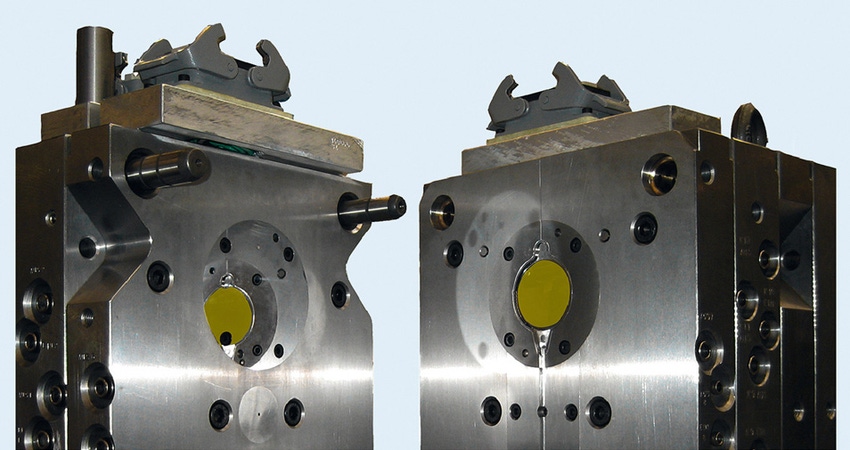Thin-film heating technology developed for injection molding processes by Germany's Fraunhofer Institute for Mechanics of Materials IWM (Freiburg) reportedly can reduce energy consumption by as much as 90% compared with conventional molding practices. This is achieved by heating only the part of the tooling that comes into contact with the plastic melt.
January 7, 2014

Thin-film heating technology developed for injection molding processes by Germany's Fraunhofer Institute for Mechanics of Materials IWM (Freiburg) reportedly can reduce energy consumption by as much as 90% compared with conventional molding practices. This is achieved by heating only the part of the tooling that comes into contact with the plastic melt.
Variothermic methods are typically used to heat the entire tool during the injection molding process. Cooling the tool sufficiently so that the molded part can be removed without damage adds time to the cycle. By minimizing the amount of tooling surface that must be heated and cooled, significant energy savings can be realized. Fraunhofer researchers teamed up with Kunststoff Zentrum (Leipzig, Germany), which provides quality assurance, education, R&D, and consulting services to plastics professionals, to develop a process that would reduce energy consumption while improving molded part quality.
The quality of the molded part may also be improved by the technology, says Fraunhofer's Alexander Fromm. "The thin film heater in combination with a thin film thermocouple is able to very accurately regulate the interfacial temperature, [thus, increasing] the reproduction quality of small structures on the mold surface," says Fromm. "It can also lead to a decrease in cycle time . . . depending on the production process that is being used."
|
Heizschict = heating layer. Dünnschicht = thin layer. Isolationsschicht = insulation layer. Stahl = steel. |
The technique involves sputtering a thin film of material, on the order of a few micrometers, onto the surface of the mold. The material is capable of heating the surface of the forming tool to the requisite temperature while withstanding thermodynamic stress. Insulation is provided by a ceramic layer that shields the tooling from the conductive heating layer, which is made from a specially formulated material. Integrated sensors—thermocouples made from nickel or a nickel-chrome alloy and measuring a few hundred nanometers in thickness—monitor the temperature and can be used to regulate the manufacturing process.
Thin-film technology enables production of the thermocouples and their integration in the insulation layer, says Fraunhofer. Because of their low mass, the thermocouples react rapidly to shifts in temperature and enable direct monitoring of the tooling wall. Lab tests demonstrated that the tool wall reached the desired temperature rapidly.
The technology is suitable for use with parts that are compatible with the physical vapor deposition coating process, says Fromm. Fraunhofer is currently seeking partners to scale the technology for industrial applications, he adds.
About the Author(s)
You May Also Like





